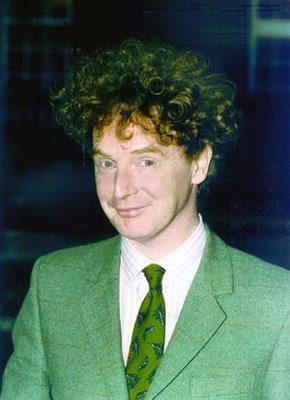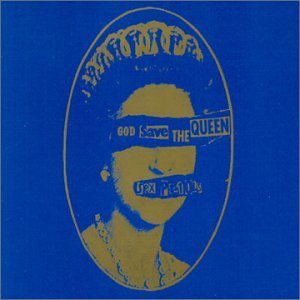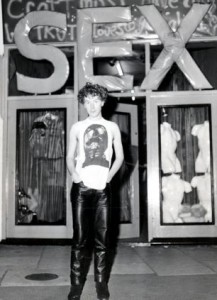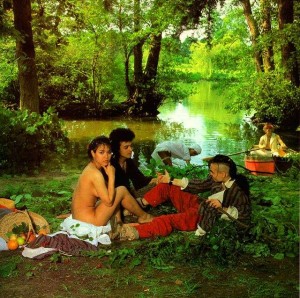
Many paid tribute to the godfather of punk, from his ex-partner Vivienne Westwood to former Sex Pistols guitarist Steve Jones who called him “the Brian Epstein of punk”.
Malcolm McLaren was born in 1946 in Stoke Newington, North London, where he was raised by his eccentric maternal grandmother Rose. He later reported that she would say to him “to be bad is good… to be good is simply boring”, plunging him into a bath of subversive spirit from a very young age.
When he reached 18, McLaren went to Harrow Art School where he met Vivienne Westwood and lost his virginity to her. She was a school teacher at the time and soon became his girlfriend – and pregnant with their son Joseph, now the owner of the glamorous lingerie brand Agent Provocateur.
Between the late sixties and the beginning of the seventies, where he opened his first shop with Vivienne Westwood, McLaren attended several art colleges where things went generally quite bad. The Croydon art college even tried to transfer him to a mental institution.
At the time, he was fascinated by the writings of the Situationists International, a French revolutionary movement founded in 1957, deeply rooted into Marxism and whose main influential essay is the famous The Society of Spectacle by Guy Debord. The movement, characterised by a Marxist and surrealist take on art and politics, aimed to reply to the fake models advertised by mass media with alternative life experiences. It also played a great role in the May 68 events in Paris.
It must certainly have struck a chord in McLaren, who tried and fought the establishment during his whole life, in his own way. His son Joseph Corre reported that his last words on his death bed were “Free Leonard Peltier”, an Indian-American who is serving life for the murder of two FBI agents in 1975 and considered a political prisoner by many. It also makes sense that McLaren’s last will was to be buried in Highgate Cemetery, North London, close to where he grew up but also renowned as being the final resting place of Karl Marx.
McLaren and Vivienne Westwood opened their first shop in 1971 on the Kings Road and named it Let It Rock. The shop sold Teddy Boy clothes and crepe-soled shoes. When asked in an interview with Vice Magazine why he got into this whole teddy-boy thing in the seventies, he answered he did it as an act of revolt against the hippies: “That part of Kings Road was known internationally as the taste making, rock and roll capital of the world (…) It was the era of kaftans and beads so I put a jukebox in there that blared out rock and roll constantly.”
This shop changed names several times, renamed Too Fast To Live Too Young To Die, then SEX, when McLaren came back to London after his trip to New York. At that time, it was selling S&M garments, rubber t-shirts or knickers but also tit clamps and cock rings. Better than your local sex-shop, a pure product of the underground culture.
More than that, Malcolm McLaren is an icon of the punk movement and his contribution to British music is invaluable. Alan McGee, music industry boss and musician, declared in a tribute that “Malcolm shaped the face of British Music. Without him, we would never have had Primal Scream or Oasis or so many iconic British bands that followed in the tracks of the Sex Pistols”.
It all started when McLaren went to a boutique fair in New-York in 1972. He was already making stage wear for the New York Dolls, an American protopunk band who has influenced a whole generation of musicians such as The Clash, Ramones, Guns ‘n’ Roses but also the Sex Pistols themselves. McLaren quickly became their manager and designed a whole new look for them, using red patent leather and Soviet symbols, putting the Dolls into Maoist Red Guard outfits. The idea was for McLaren, who was fascinated with the Situationists International theories, to “put a certain social and political commentary back into pop culture.” It was a failure and the band separated soon afterwards.
McLaren then chose the most sensible option and came back to London where he renamed the shop SEX but kept in mind the idea of creating a band. He actually recruited the members directly among the denizens of Sex, Glenn Matlock (replaced by Sid Vicious in early 1977), Steve Jones and soon John Lydon, quickly rechristened Johnny Rotten because of his never-brushed teeth. John Lydon impressed McLaren with his attitude and style, and after he joined the band as new lead singer, the Sex Pistols were born.

McLaren managed and created new looks for other bands, like Adam and the Ants and Bow Wow Wow (the latter actually made out of the first one). He gave them a kind of pirate look with an ethnic beat. It quickly became quite controversial though – beside the famous cover with 14 year-old Annabella in a Dejeuner sur l’Herbe-like scene – as the original source for this African beat was a recording of 25 Burundian drummers included in the album ‘Musiques du Burundi’ by the French Label Ocora in 1968. The problem, as highlighted in a 1981 New York Times article by Robert Palmer, is that the “Burundian drummers who made the recording are not sharing the profits. Nobody told them to copyright their traditional music.” McLaren himself told Vice Magazine that he discovered this music at the library of Centre Pompidou, having been asked by Barclay, who also used to make porn movies on the side, to put some music to them, with the specific instructions: “Don’t give us a hard time with any music that’s copyrighted. Use African music or something.”
Later in his career, he became a well-known musician in his own right, with the release of the album ‘Duck Rock’ in 1983. Although still accused of plagiarism, he kept mixing African and American influences, including hip-hop. This album definitely contributed to bring hip-hop to a wider audience in the UK and McLaren’s appropriation and reinterpretation of music from around the world have been largely followed since then.
Ten years later, he also recorded the album Paris, featuring duets with Catherine Deneuve and Sonia Rykiel.
Trying to summarise everything Malcolm McLaren did during his life seems like an impossible mission for he just seemed to have jumped from a project to another one, creating or managing many music bands or making music himself, staying involved in fashion with Vivienne Westwood, producing commercials for television or presenting documentary series, and so many things, films or music projects he tried to put together and launched with more or less success. You have to give him credit for this. The man always kept trying. Whatever happened! An article published in the Times last year described him as “the perpetual art student who in a fever of conceptualism threw the Sex Pistols at the year of 1977 and to his amazement found that they stuck”.
He shared the last twelve years of his life with Korean American Young Kim, who he met in Paris. Still involved in many projects, he was living between Paris and New York.
It may sound very cliché but Malcom McLaren was a true character, coming across as emotionally detached for some, and full of contradictions for sure, but as he once said : “I’m a product of the Sixties. All I ever felt is disruptive – I don’t know any other way.”
Laurie Guillem



4 comments
I came across your website, i think your blog is cool, keep us posting.
You post informative posts. Bookmarked !
Most what i read online is trash and copy paste but your posts are not alike. Bravo.
Definitely, what a splendid site and informative posts, I surely will bookmark your blog.Best Regards!
Comments are closed.